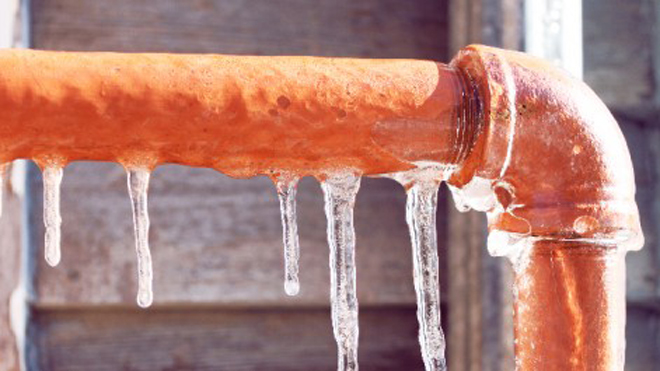Important Advice for Avoiding Frozen Pipes in Winter Conditions
Important Advice for Avoiding Frozen Pipes in Winter Conditions
Blog Article
We've stumbled on this article involving How to Prevent Your Pipes From Freezing down the page on the net and thought it made good sense to share it with you over here.

Winter can damage your plumbing, especially by freezing pipelines. Here's just how to avoid it from taking place and what to do if it does.
Introduction
As temperature levels decrease, the danger of icy pipes boosts, possibly bring about expensive fixings and water damages. Recognizing how to avoid icy pipelines is critical for property owners in cool climates.
Understanding Icy Pipelines
What creates pipes to freeze?
Pipes freeze when exposed to temperatures below 32 ° F (0 ° C) for prolonged durations. As water inside the pipes ices up, it broadens, putting pressure on the pipeline wall surfaces and potentially creating them to rupture.
Risks and problems
Frozen pipelines can result in supply of water disturbances, building damages, and costly repair services. Ruptured pipelines can flooding homes and cause substantial structural damage.
Signs of Frozen Water Lines
Recognizing frozen pipes early can stop them from breaking.
How to determine icy pipelines
Try to find reduced water flow from taps, unusual odors or noises from pipelines, and noticeable frost on exposed pipes.
Prevention Tips
Insulating vulnerable pipelines
Cover pipes in insulation sleeves or use heat tape to secure them from freezing temperatures. Concentrate on pipelines in unheated or external locations of the home.
Heating strategies
Keep interior spaces effectively heated up, specifically locations with plumbing. Open closet doors to enable warm air to circulate around pipelines under sinks.
Shielding Outdoor Plumbing
Garden hoses and exterior faucets
Disconnect and drain pipes yard hose pipes prior to winter months. Mount frost-proof spigots or cover exterior faucets with protected caps.
What to Do If Your Pipelines Freeze
Immediate activities to take
If you presume frozen pipelines, maintain faucets open up to relieve pressure as the ice melts. Use a hairdryer or towels taken in warm water to thaw pipelines gradually.
Long-Term Solutions
Architectural changes
Take into consideration rerouting pipes away from exterior walls or unheated areas. Include additional insulation to attics, cellars, and crawl spaces.
Upgrading insulation
Buy top notch insulation for pipes, attic rooms, and wall surfaces. Appropriate insulation assists maintain regular temperatures and reduces the threat of frozen pipelines.
Conclusion
Stopping frozen pipelines requires proactive measures and quick responses. By comprehending the causes, signs, and safety nets, home owners can protect their pipes during cold weather.
5 Ways to Prevent Frozen Pipes
Drain Outdoor Faucets and Disconnect Hoses
First, close the shut-off valve that controls the flow of water in the pipe to your outdoor faucet. Then, head outside to disconnect and drain your hose and open the outdoor faucet to allow the water to completely drain out of the line. Turn off the faucet when done. Finally, head back to the shut-off valve and drain the remaining water inside the pipe into a bucket or container. Additionally, if you have a home irrigation system, you should consider hiring an expert to clear the system of water each year.
Insulate Pipes
One of the best and most cost-effective methods for preventing frozen water pipes is to wrap your pipes with insulation. This is especially important for areas in your home that aren’t exposed to heat, such as an attic. We suggest using foam sleeves, which can typically be found at your local hardware store.
Keep Heat Running at 65
Your pipes are located inside your walls, and the temperature there is much colder than the rest of the house. To prevent your pipes from freezing, The Insurance Information Institute suggests that you keep your home heated to at least 65 degrees, even when traveling. You may want to invest in smart devices that can keep an eye on the temperature in your home while you’re away.
Leave Water Dripping
Moving water — even a small trickle — can prevent ice from forming inside your pipes. When freezing temps are imminent, start a drip of water from all faucets that serve exposed pipes. Leaving a few faucets running will also help relieve pressure inside the pipes and help prevent a rupture if the water inside freezes.
Open Cupboard Doors
Warm your kitchen and bathroom pipes by opening cupboards and vanities. You should also leave your interior doors ajar to help warm air circulate evenly throughout your home.

As a fervent person who reads on How to prepare your home plumbing for winter weather, I assumed sharing that article was essential. Remember to take the opportunity to distribute this blog post if you enjoyed reading it. Thanks for going through it.
Call Today Report this page